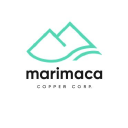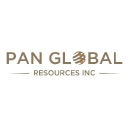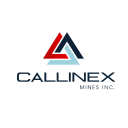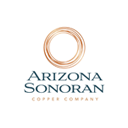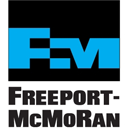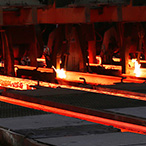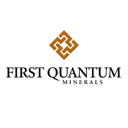US Copper Market Poised for Steady Growth Amid Rising Demand

The United States copper market is set to experience steady growth between 2024 and 2028, driven by increasing demand across various industries and technological advancements. This comprehensive overview provides investors with key insights into market dynamics, major players, and growth opportunities in the U.S. copper sector. As a critical component in numerous applications, from construction to cutting-edge technologies, copper plays a vital role in the U.S. economy and its future development.
Market Overview and Growth Projections
The US copper market is projected to grow at a Compound Annual Growth Rate (CAGR) of 4.2% from 2024 to 2030. This growth trajectory is underpinned by several factors, chief among them being the rising demand in the construction industry. The sector is expected to expand significantly due to increased residential and commercial infrastructure development, particularly in urban areas and growing suburban regions.
The electrical and electronics sector is another major driver of copper demand. The growing need for copper in producing wires, cables, transformers, and motors contributes substantially to market expansion. This trend is further amplified by the rapid digitalization of various industries and the increasing adoption of smart technologies in homes and businesses.
Copper's unique properties, including its excellent electrical conductivity, corrosion resistance, and antimicrobial characteristics, make it an indispensable material in many applications. These properties ensure its continued relevance even as new technologies emerge, positioning the copper market for sustained growth in the coming years.
Key Market Segments
- Electronics, Electrical and Datacenters
The electronics and electrical segment is a crucial application area for copper in the United States. This sector's growth is primarily driven by the increasing adoption of electronic devices such as smartphones, tablets, and laptops, all of which require copper wiring and components. The trend towards miniaturization in electronics paradoxically leads to increased copper usage, as more complex circuitry is packed into smaller spaces.
Moreover, the push for energy-efficient electrical equipment is boosting the use of copper in producing motors and transformers. High-efficiency electric motors, which often contain more copper than standard models, are becoming increasingly popular across industries due to their lower operating costs and reduced environmental impact.
The rollout of 5G networks and Ai datacenters are another significant factor driving copper demand in this segment. 5G and Ai datacenter infrastructure requires substantial copper for antennas, cables, and other components. As 5G coverage and increased demands from AI expands across the United States, it will continue to be a major source of copper consumption.
- Construction
Construction remains a significant consumer of copper in the U.S. market. Copper's properties, including high ductility, thermal conductivity, and corrosion resistance, make it ideal for plumbing systems, electrical wiring, roofing, and HVAC systems. The sector's growth is further supported by government focus on infrastructure development, urbanization, and a resurgent housing market.
The trend towards green building practices is also boosting copper usage in construction. Copper's recyclability and long lifespan make it an attractive material for sustainable construction projects. Additionally, its use in solar panels and other renewable energy systems integrated into buildings is increasingly important in modern construction practices.
Another area driving copper demand is renovating and retrofitting existing buildings to improve energy efficiency. As older structures are updated to meet new energy standards, significant amounts of copper are required to rewire and install new, more efficient systems.
- Transportation
The transportation segment is experiencing notable growth, particularly due to the rising demand for electric vehicles (EVs). Copper is a crucial component in EV production, used in batteries, motors, and charging systems. An average electric vehicle uses about 83 kg of copper, compared to just 23 kg in a conventional internal combustion engine vehicle.
The United States is expected to be one of the largest markets for EVs, with sales projected to reach millions by 2025, presenting significant opportunities for copper suppliers. Government initiatives promoting EV adoption, improving charging infrastructure, and setting ambitious targets for reducing carbon emissions in the transportation sector support this growth.
Beyond EVs, copper is vital in traditional vehicles, used in wiring harnesses, radiators, and other components. The trend towards more electronic vehicle features, such as advanced driver-assistance systems (ADAS), further increases automobile copper content.
- Industrial Machinery
Industrial machinery is another important application segment for copper in the U.S. market. The metal is used in various equipment, including generators, pumps, and compressors. The increasing demand for energy-efficient industrial machinery and the growing trend of automation and smart factories drive growth in this segment.
Industry 4.0 initiatives involve integrating digital technologies into manufacturing processes and create new copper usage opportunities. Smart factories require extensive sensor networks and communication systems, many of which rely on copper components.
The rise of renewable energy is also boosting demand for copper in industrial machinery. Wind turbines, for example, use significant amounts of copper in their generators and other components. As the United States continues to invest in renewable energy infrastructure, this will likely drive further growth in copper demand.
Competitive Landscape
The U.S. copper market features several major players, each with its own strengths and strategies. Here's a more detailed look at some of the key companies:
- BHP Billiton: As one of the world's largest mining companies, BHP Billiton has a significant presence in the U.S. copper market. The company operates the Escondida mine in Chile, which is the world's largest copper mine. BHP Billiton's focus on technological innovation and operational efficiency gives it a competitive edge in the market.
- Freeport-McMoRan: This U.S.-based company is one of the world's largest copper producers. It operates several significant copper mines in North America, including the Morenci mine in Arizona, which is one of the largest copper mines in North America. Freeport-McMoRan's extensive domestic operations position it well to meet U.S. demand.
- Southern Copper Corporation: Majority-owned by Grupo Mexico, Southern Copper Corporation has substantial copper mining operations in Peru and Mexico. The company's low-cost production profile and large reserve base make it a significant player in the global copper market, including in the United States.
- Rio Tinto: This multinational mining corporation has a diverse portfolio that includes significant copper assets. Rio Tinto's Kennecott Utah Copper mine is one of the largest and oldest copper mines in the United States. The company's focus on innovation and sustainability initiatives sets it apart in the industry.
- First Quantum Minerals: While primarily operating outside the U.S., First Quantum Minerals is a major global copper producer with influence on the U.S. market. The company's Cobre Panama mine, one of the largest copper mines developed in recent years, adds significant supply to the global market.
These companies have diverse product portfolios, extensive mining operations, and a strong focus on innovation and sustainability. Their strategies include expanding production capacities, investing in new technologies, and implementing sustainable practices to maintain competitive advantages.
Many of these companies invest heavily in automation and digital technologies to improve operational efficiency and reduce costs. They also focus on developing more environmentally friendly mining practices, recognizing the growing importance of sustainability in the industry.
Value Chain Analysis
The U.S. copper market's value chain encompasses several vital stages:
- Mining: This is the initial stage of extracting copper ore from the earth. The U.S. has several significant copper mines, particularly in states like Arizona, Utah, and New Mexico. Mining companies use various methods, including open-pit mining and underground mining, depending on the nature of the deposit.
- Concentrating: The ore is crushed and ground into a fine powder after mining. It then undergoes a flotation process to separate the copper minerals from other materials, resulting in copper concentrate.
- Smelting: The copper concentrate is then heated in a furnace to remove impurities and produce copper matte, which is about 50-70% copper.
- Converting and Refining: The copper matte undergoes further processing to remove remaining impurities, resulting in 99.9% pure copper cathodes.
- Fabrication: The refined copper is then shaped into various forms, such as wire, tubes, or sheets, depending on its intended use.
- End-Use Manufacturing: The fabricated copper products are used to manufacture various goods across different industries.
Major players are often involved in multiple value chain segments, allowing for greater efficiency and cost-effectiveness in production and distribution. This vertical integration can give companies more control over their supply chain and potentially higher profit margins. Integrating these processes is crucial for meeting the growing demand across industries. It allows for better quality control, more efficient resource allocation, and the ability to respond more quickly to market changes. Recycling is becoming an increasingly important part of the copper value chain. As copper can be recycled indefinitely without losing quality, many companies invest in recycling capabilities to supplement their primary production and improve their sustainability profile.
Future Outlook and Opportunities
The US copper market is poised for continued growth, driven by several factors:
- Increasing demand in construction and infrastructure development: The Biden administration's focus on infrastructure renewal will drive significant copper demand in the coming years.
- Growing adoption of electric vehicles and renewable energy systems: As the U.S. transitions towards cleaner energy, copper will play a crucial role in enabling this shift.
- Rising need for energy-efficient industrial machinery: The push for energy efficiency across industries will continue to drive demand for copper-intensive equipment.
- Ongoing technological advancements in copper mining and processing: Innovations in these areas could improve efficiency and reduce costs, potentially expanding profit margins for copper producers.
- Expansion of 5G networks and AI data centers: The continued rollout of 5G and growth in cloud computing will drive demand for copper in telecommunications infrastructure.
Investors should consider the following opportunities:
- Investments in companies focusing on sustainable mining practices: As environmental concerns become increasingly important, companies leading in this area may gain competitive advantages.
- Exploration of copper recycling initiatives to meet growing demand: The circular economy presents new opportunities in the copper market.
- Potential partnerships or acquisitions in the EV and renewable energy sectors: These rapidly growing sectors offer significant potential for copper demand growth.
- Research and development in copper-based technologies for emerging industries: Innovations in areas such as antimicrobial surfaces or advanced electronics could open new markets for copper.
- Investment in copper futures and ETFs: For those looking for exposure to copper prices without direct investment in mining companies.
Challenges and Considerations
While the outlook is positive, investors should be aware of potential challenges:
- Fluctuations in global copper prices: Copper prices can be volatile, influenced by factors such as global economic conditions, supply disruptions, and changes in demand from major consumers like China.
- Environmental regulations impacting mining operations: Stricter environmental standards could increase operational costs for mining companies.
- Geopolitical factors affecting international trade and supply chains: Trade tensions or changes in trade policies could impact the global copper market.
- Competition from alternative materials in certain applications: Materials such as aluminum or fiber optics compete with copper in some applications.
- Labor disputes and skill shortages in the mining sector: These issues could potentially disrupt production and increase costs.
- Long lead times for new mining projects: Developing new copper mines can take years, making it challenging to quickly respond to demand increases.
The U.S. copper market presents promising opportunities for investors, driven by steady growth projections and increasing demand across various sectors. As the country moves towards a more sustainable and technologically advanced future, copper will continue to play a crucial role in supporting economic development and innovation. The market's growth is underpinned by strong fundamentals, including the metal's essential role in key growth industries such as electric vehicles, renewable energy, and advanced electronics. While challenges exist, including price volatility and environmental concerns, the overall outlook for the U.S. copper market remains positive.
Investors looking to capitalize on this market should consider a diversified approach, potentially including investments in mining companies, recycling initiatives, and downstream industries heavily relying on copper. As always, careful due diligence and consideration of individual risk tolerance are essential when making investment decisions in this dynamic market.
Macro Thematic Analysis
The US copper market is positioned at the intersection of several significant macro trends that are shaping the global economy. These trends influence the demand for copper and impact how it's produced, processed, and utilized across various industries.
First and foremost, the ongoing transition to clean energy and sustainable technologies is driving unprecedented demand for copper. As a critical component in renewable energy systems, electric vehicles, and energy-efficient infrastructure, copper is essential to the green revolution. The Biden administration's ambitious climate goals, including achieving 100% carbon-free electricity by 2035 and net-zero emissions economy-wide by 2050, will require massive investments in renewable energy infrastructure, all of which will drive copper demand.
Secondly, the digital transformation across industries is fueling demand for copper in electronics and telecommunications infrastructure. The rollout of 5G networks, the expansion of data centers, and the proliferation of Internet of Things (IoT) devices all rely heavily on copper components. As the U.S. continues to lead in technological innovation, the demand for copper in these high-tech applications is expected to grow significantly.
Urbanization and infrastructure development represent another crucial macro trend. As cities grow and modernize, the need for copper in construction, transportation systems, and utilities intensifies. The U.S. government's focus on infrastructure renewal, as evidenced by the $1 trillion infrastructure bill passed in 2021, further amplifies this trend. This massive investment in rebuilding America's infrastructure will undoubtedly boost copper demand across various sectors.
Moreover, the reshoring of manufacturing and the emphasis on supply chain resilience in the wake of global disruptions will likely boost domestic copper production and processing. This shift could lead to increased investment in US-based copper operations and technologies. The COVID-19 pandemic has highlighted the vulnerabilities in global supply chains, prompting many companies and policymakers to reconsider the benefits of domestic production.
Lastly, the growing focus on circular economy principles and resource efficiency drives innovation in copper recycling and sustainable mining practices. Companies that can effectively address these environmental concerns while meeting rising demand will likely gain competitive advantages. Investors' increasing emphasis on ESG (Environmental, Social, and Governance) factors is pushing companies in the copper industry to adopt more sustainable practices.
These macro trends collectively point to a robust long-term outlook for the US copper market, presenting diverse opportunities for investors across the value chain. From mining and recycling to developing new copper-based technologies, the market offers numerous avenues for investment and growth.
However, it's important to note that these macro trends also bring challenges. The push for sustainability may lead to stricter regulations on mining practices, potentially increasing production costs. The transition to renewable energy and electric vehicles, while driving copper demand, may also face hurdles in terms of policy support and consumer adoption rates. Additionally, geopolitical tensions and trade disputes could impact global copper supply chains and prices.
Despite these challenges, the overall trajectory of the U.S. copper market remains positive. The metal's crucial role in enabling key technologies and infrastructure for a sustainable, digital future ensures its continued relevance and demand. Investors who can navigate the complexities of this market and align their strategies with these macro trends are well-positioned to capitalize on the opportunities presented by the evolving U.S. copper market.
"The U.S. copper market is projected to grow at a CAGR of 4.2% from 2022 to 2030, driven by increasing demand from various industries, including construction, electrical and electronics, and transportation. This growth trajectory and the metal's critical role in sustainable technologies position copper as a key material in transitioning to a greener, more technologically advanced economy."
Marimaca Copper (TSX:MARI) is a promising copper exploration company focused on its flagship Marimaca Copper Project in Chile's Antofagasta region. This project stands out as the only significant copper discovery globally in the last five years, offering low risk and substantial exploration potential. The Marimaca deposit is unique, challenging conventional exploration wisdom by being hosted in intrusive rocks rather than volcanics. This distinction could open new frontiers for copper exploration in Chile and beyond. Located in the coastal belt at low elevation near Antofagasta and Mejillones, the project benefits from existing infrastructure and utilities. This advantageous position could lead to lower capital investment and reduced execution risk for future development. Marimaca's dual strategy aims to fully realize the potential of its flagship project while exploring for similar large-scale targets, including a possible new IOCG district. With Chile facing a scarcity of new copper discoveries, the Marimaca Copper Project has gained high-profile status in the country's mining sector. Investors interested in a potentially high-margin copper project with significant growth prospects may find Marimaca Copper Corp. an attractive opportunity in the TSX-listed mining sector.
Pan Global Resources (TSX-V:PGZ, OTCQX:PGZFF) is a mineral exploration company focused on discovering copper, tin, and other metals in southern Spain. The company's operations are centered in Andalucia, a region known for its rich mineral deposits. Pan Global's flagship project is the Escacena Copper Project, located in the Iberian Pyrite Belt near Seville. This area is renowned as the world's premier volcanic-hosted massive sulphide district. Escacena covers approximately 5,800 hectares, offering significant exploration potential. In addition to Escacena, the company is actively exploring the Águilas Project near Cordoba, which encompasses about 16,000 hectares. Pan Global continues to expand its portfolio by acquiring additional mineral rights in Spain for further exploration. Incorporated in 2006 under British Columbia's Business Corporations Act, Pan Global Resources achieved Tier II mining company status in 2009. This classification on the TSX Venture Exchange reflects the company's progress and potential in the mining sector. For investors interested in the mineral exploration sector, particularly in copper and other base metals, Pan Global Resources presents an opportunity to gain exposure to promising projects in a historically productive mining region.
Callinex Mines (TSXV:CNX) (OTCQX:CLLXF) is focused on its Pine Bay Project in the prolific Flin Flon Mining District of Manitoba. The project boasts a district-scale land package with seven known VMS deposits along a 10km trend, including three high-grade copper deposits discovered by Callinex. The company recently announced a Mineral Resource Estimate for the Rainbow Deposit, with an Indicated resource of 3.44 Mt at 3.59% CuEq and an Inferred resource of 1.28 Mt at 2.95% CuEq. The nearby Pine Bay Deposit adds an Inferred 1.0 Mt at 2.62% CuEq. Callinex's exploration success is highlighted by the discovery of the Rainbow Deposit in 2020, which has shown impressive high-grade intersections, including 37m of 6.00% Cu in one drill hole. The company continues to explore and delineate additional deposits like Alchemist and Descendent. The project benefits from existing infrastructure and its strategic location just 16km from Flin Flon, where HudBay's processing facilities await new mineral resources. This positioning, combined with the potential for additional discoveries, presents a compelling opportunity for investors interested in advanced-stage copper exploration projects with near-term production potential.
Arizona Sonoran Copper (TSX:ASCU | OTCQX:ASCUF) is a mining company focused on developing base metal properties in low geopolitical risk areas. Their primary asset is the Cactus Project, a 100% owned copper mine located near Casa Grande, Arizona, just 70 km south of Phoenix. The Cactus Mine benefits from a strategic location at the convergence of three major porphyry copper belts. It offers excellent access to skilled labor, water, power, transportation networks, and other essential infrastructure. This positioning provides ASCU with significant operational advantages. Led by an experienced management team and board with a proven track record in North American project delivery and global capital markets, ASCU is well-positioned to execute its development plans. The company emphasizes responsible and respectful mining practices, aligning with the growing importance of copper in the green revolution and circular economy. Copper's versatility, conductivity, and recyclability make it a critical metal for various industries and sustainable technologies. For investors seeking exposure to the copper sector, ASCU offers a compelling opportunity with its strategic asset, experienced leadership, and focus on sustainable development in a favorable mining jurisdiction.
Hot Chili (ASX/TSXV:HCH, OTCQX:HHLKF) is a copper exploration and development company focused on its Costa Fuego project in northern Chile. Costa Fuego is considered one of the top 10 "low risk" undeveloped copper projects globally by S&P Global Market Intelligence. The project boasts substantial mineral resources, with an Indicated Resource of 2.8 Mt Copper, 2.6 Moz Gold, and 67 Kt Molybdenum, plus additional Inferred Resources. Hot Chili aims to create a new mining hub on the coastal range of Chile, combining three key projects: Cortadera, Productora, and El Fuego. Costa Fuego benefits from excellent infrastructure, including proximity to a port, seawater pipeline, power substation, and major highway. A recent Preliminary Economic Assessment confirmed its potential as a low-risk, long-life copper project with low start-up capital and high annual production. Hot Chili has strategically obtained listings on the TSXV and OTCQX to align with its global copper peer group and potentially narrow the valuation gap with North American peers. For investors seeking exposure to copper, Hot Chili offers leverage to the copper price through its large, high-quality resource base in a favorable location.
Analyst's Notes




Subscribe to Our Channel
Stay Informed










